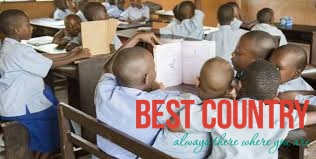Education System in Rwanda

Middle Education
The following three years - for those who are fortunate enough - are spent at junior secondary school. At the end of this period the next hurdle is the national secondary education ordinary examination in 9 subjects. A student may not proceed further at State school at least, without first passing this test.
Secondary Education
Less than 13,000 of the students who take the middle school examination are admitted to senior secondary school because of a shortage of facilities. Most of these attend State boarding schools although there are a few private schools too. There are 9 curriculum groups and the final examination is for the secondary education advance level certificate.
Vocational Education
Rwanda vocational training is to receive fresh impetus in terms of an announcement made by the President in April 2011. The core thrust of this is the establishment of an integrated polytechnic in Kigali, and hopefully more will follow in other centers too.
Tertiary Education
There are close to 50,000 students enrolled in Rwanda’s tertiary students where admission is competitive and they study for certificates, diplomas and degrees. These include 9 polytechnics and 6 universities of various calibers. Chief among these is the National University of Rwanda located in Butare and established in 1963.
Its 10 faculties include medicine, agriculture, arts, media & social sciences, applied sciences, law, science, economics & management, public health, and a school for foundation language skills.There are close to 50,000 students enrolled in Rwanda’s tertiary institutions, where admission is competitive and they study for certificates, diplomas and degrees. These include 9 polytechnics and 6 universities of various calibers.
Chief among these is the National University of Rwanda located in Butare and established in 1963. Its 10 faculties include medicine, agriculture, arts, media & social sciences, applied sciences, law, science, economics & management, public health, and a school for foundation language skills.